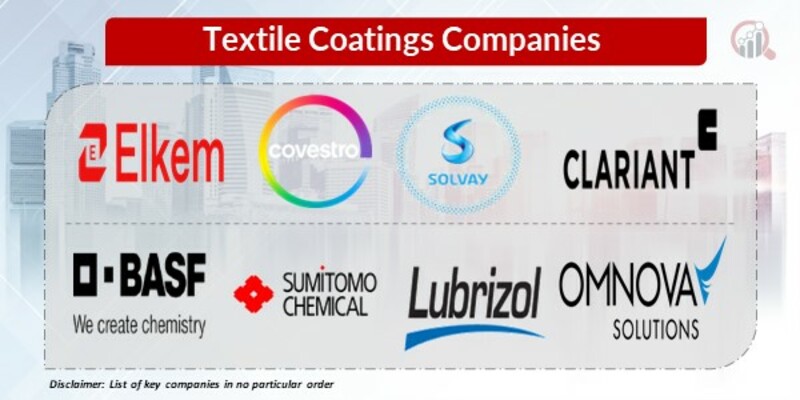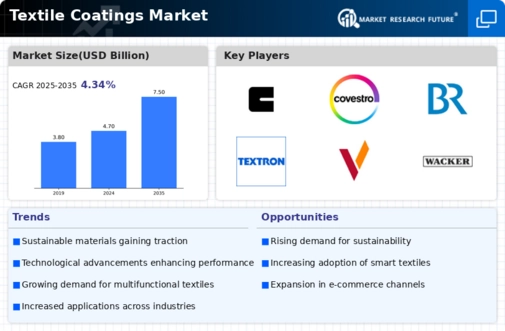Top Industry Leaders in the Textile Coatings Market

Textile Coatings Market
The global textile coatings market is a dynamic space, driven by a constant interplay between innovation, sustainability, and diverse end-use applications. Let's delve into the intricacies of this landscape, exploring key strategies, market share influencers, industry news, and recent developments in the past six months.
Strategies for Success in the Textile Coatings Market:
-
Product Innovation: Leading players are constantly innovating, developing coatings with enhanced functionalities like self-cleaning, fire resistance, and antimicrobial properties. Companies like BASF and Dow Chemical are heavily invested in R&D, focusing on bio-based and eco-friendly coatings. -
Diversification: Manufacturers are expanding their portfolios to cater to a wider range of applications. For instance, Chemours offers coatings for protective clothing, while Huntsman focuses on automotive textiles. This diversification helps mitigate risk and capture new market segments. -
Geographical Expansion: Emerging markets like China and India are witnessing rapid growth in the textile industry, prompting established players to set up production facilities or acquire local companies. This ensures closer proximity to key customers and reduces logistical costs. -
Sustainability Focus: The growing emphasis on sustainability is driving the development of water-based and solvent-free coatings with lower environmental impact. Companies like Archroma and Evonik are leading the charge in this area, offering sustainable alternatives to traditional coatings. -
Strategic Partnerships: Collaborations between coating manufacturers, textile producers, and end-use industry players are becoming increasingly common. These partnerships facilitate knowledge sharing, accelerate innovation, and streamline supply chains.
Factors Influencing Market Share:
-
Product Portfolio: The breadth and functionality of a company's coating offerings significantly impact its market share. Players with diverse portfolios catering to various applications tend to have a stronger competitive edge. -
Manufacturing Capacity: The ability to meet the growing demand for textile coatings is crucial. Companies with efficient production facilities and robust distribution networks hold an advantage. -
Brand Reputation: Established brands with a proven track record of quality and reliability attract more customers, leading to a higher market share. -
Pricing Strategy: Competitive pricing strategies can help companies penetrate new markets and gain market share. However, maintaining profitability while offering competitive prices requires careful cost management. -
Government Regulations: Stringent regulations regarding chemical emissions and environmental impact can influence the choice of coating materials. Companies that comply with these regulations and offer sustainable solutions are likely to gain market share.
Key Players
- Elkem Solutions (Norway)
- Covestro AG (Germany)
- Solvay (Belgium)
- Clariant (Switzerland)
- BASF SE (Germany)
- Sumitomo Chemical Company (Japan)
- The Lubrizol Corporation (US)
- Omnova Solutions Inc. (US)
- Formulated Polymer Products Ltd (UK)
- TANATEX Chemicals B.V. (Netherlands)
Recent Developments :
April 2023: The Textile Research Institute of India (TRI) launches a research project on the development of bio-based coatings for medical textiles, aiming to address the growing need for sustainable healthcare solutions.
May 2023: Evonik partners with a leading sportswear manufacturer to develop a new line of high-performance coatings for athletic apparel, focusing on breathability and comfort.









